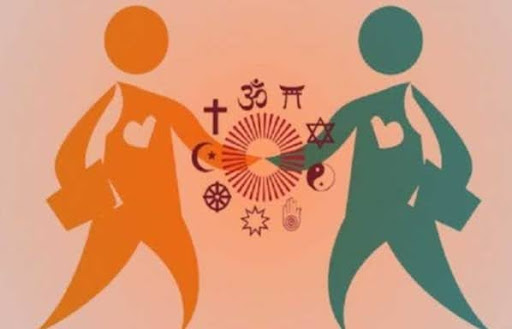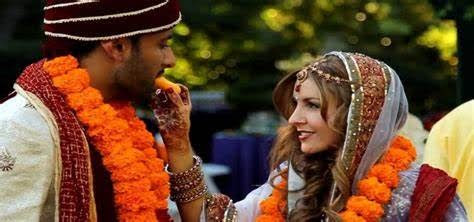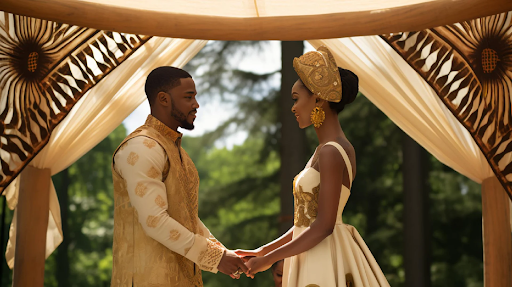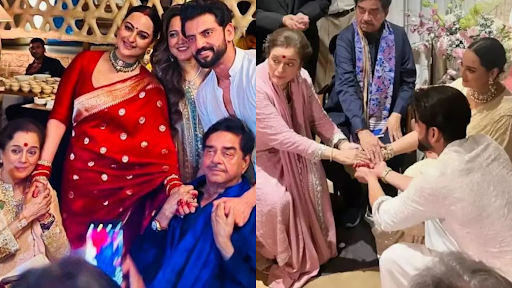Introduction
As we move to a multicultural and more thoroughly interlinked world, interfaith marriages, in which the two spouses come from different religious backgrounds, become increasingly common. It is quite literally a stunning example of love conquering all; at the same time, it is unique and fraught with many challenges. Religious harmony in an interfaith marriage necessitates mutual respect, open communication, and deep understanding. This blog looks into practical ways where couples avoid the pitfalls that can happen if one does not build their relationship based on understanding and respect for each other’s religion and traditions.

Section 1: Understanding and Respect for Beliefs
The basic condition for a successful interfaith marriage is the acceptance of the two spouses in the marriage towards their faiths. This begins with experience and learning the fundamental rules and practices accompanied with the two different religions in question. Upon both spouses being in the know about their faith, they may have a better understanding of what importance is attached to various religious functions and practices
For, this learning process needs to be accompanied by an open mind and interest. Attend each other’s religious services, read books about each other’s faiths, and watch documentaries. The usual sharing will ultimately bring mutual respect and empathy
This relationship requires communication at all levels, especially in interfaith marriages. Open and honest discussion of religious beliefs and practices can help a couple avoid misperceptions and conflicts that may arise. The husband and wife should be free to share their ideas and apprehensions regarding religious issues without fear of condemnation or rejection.
Create a regular schedule to talk about your feelings about your religions and how you plan to incorporate them into your life as a couple. Much of this discussion will go from food taboos, observance of holidays, to the deeper questions of raising children in an interfaith household
Section 2: Creating Shared Rituals and Traditions
Another essential way is through the development of new rituals and traditions from elements of both faiths. This allows the couple to acknowledge their different religious heritages while creating a distinct family identity.
For instance, they can celebrate religious holidays together, for each of them to use customs or traditions that would be meaningful to both. Similarly, daily rituals can be infused in their daily life, such as joint daily prayer or meditation
Most interfaith marriages will need management of extended family expectations and apprehensions; families can be quite emotional on issues relating to religion and raising of children. However, a couple should always project a united front in front of the families and convey their decisions respectfully
A good way to head off friction about outside influences in a marriage would be to set the boundaries in the beginning. Welcome the questions and concerns of family members but also make it known that decisions are made mutually, with respect and understanding
Section 3: Raising Interfaith Children

Perhaps the most head-breaking consideration of interspiritual marriages is decision-making in child upbringing. They need to decide whether to raise their children in one faith, both, or neither. Such decisions have to be made through lengthy conversation and deliberation concerning the emotional and psychological well-being of the children.
Some couples decide to expose the child to both religions and let the child make a choice of religion as they grow older. Others may choose to pursue one religion at home while still teaching the children about the other religion. In whatever way is chosen, it remains important that a loving and supportive environment emanates from both religions and that both of them are viewed with respect in consideration of religious diversity.

Section 4: Seeking Support and Guidance
There is a lot of support and information out there for interfaith couples facing the special difficulties this kind of relationship poses. There are organizations in most communities open to sponsoring counseling and support groups, which will give an education. Also, it would be beneficial to consult religious leaders who engage in interfaith dialogues to get the best advice on the subject.
More importantly, expert counselors in interfaith relationships will provide even more important tools in terms of mechanisms for the various religious challenges. The expert counselors are going to help the couples learn effective communication, develop healthy boundaries, and share their vision for the future.

Conclusion: Love and Unity
In all essence, an interfaith marriage represents a celebration of love and unity. They find a rich and very conceived possibility of living together when embracing their religious diversities and finding the middle way. Interfaith marriages could be an example of a powerful way in which love bridged divides and people came to understand in a world full of diversity.
Inter-religious accord in marriage should not seek to hide or replace their religious differences but, rather, bring out beauty and celebration from the same. It should make a space where both feel respected, valued, and understood. With open communication, mutual respect, and shared experiences, interfaith couples can work harmoniously according to their individual path of faith and love.

